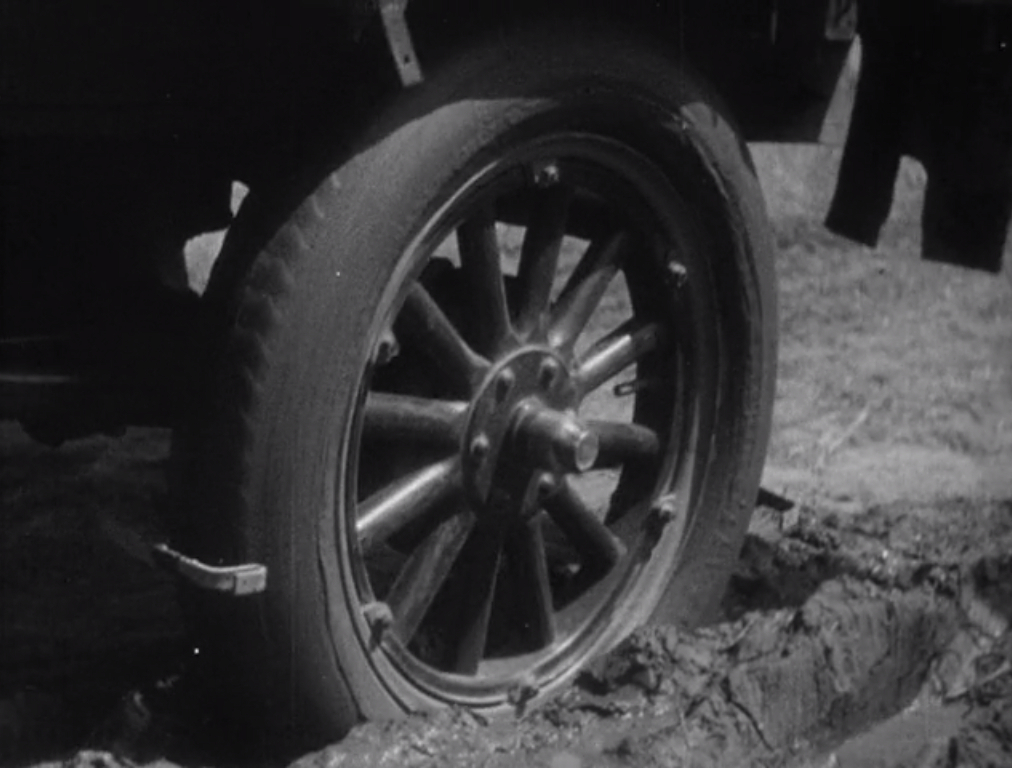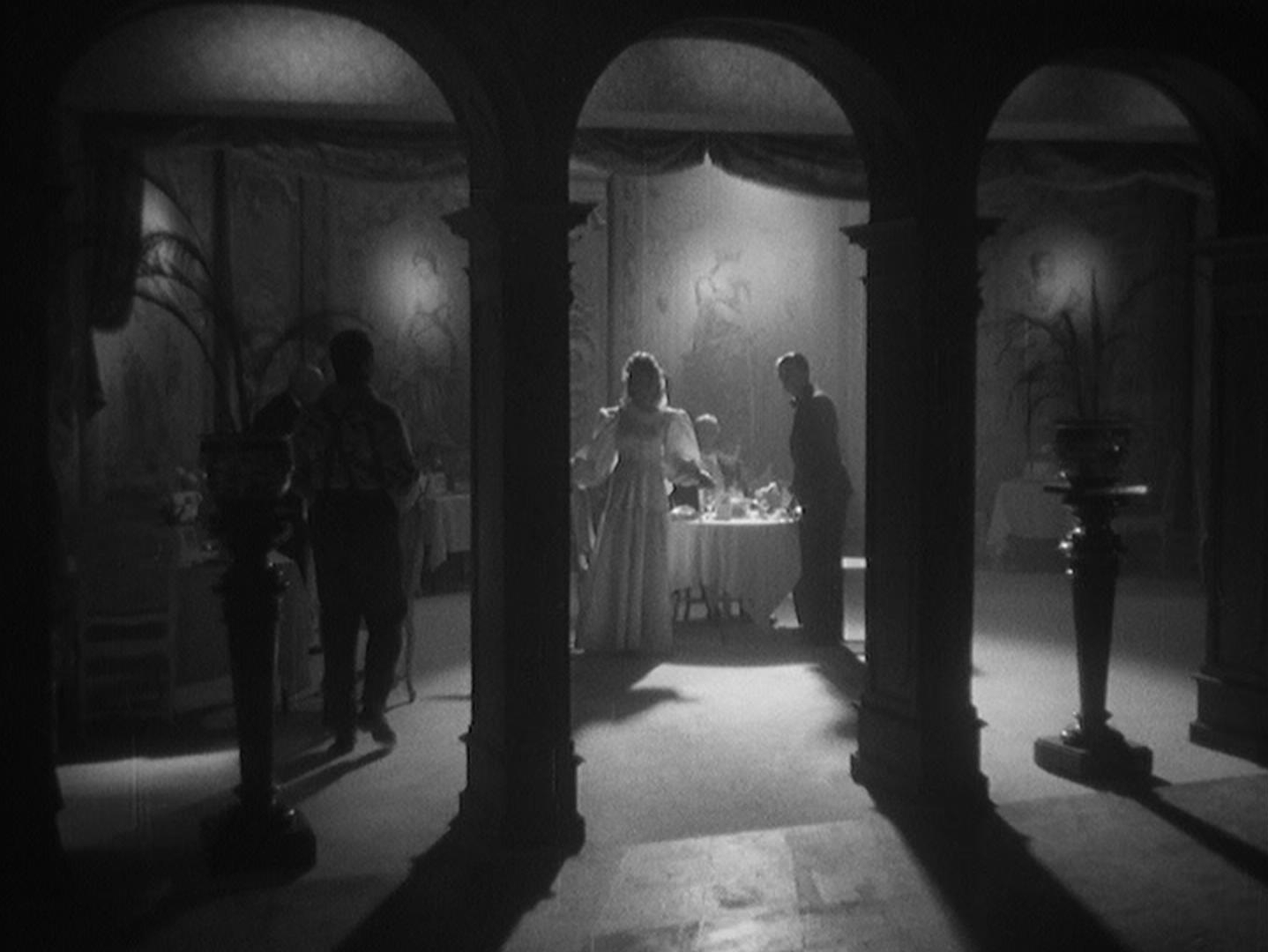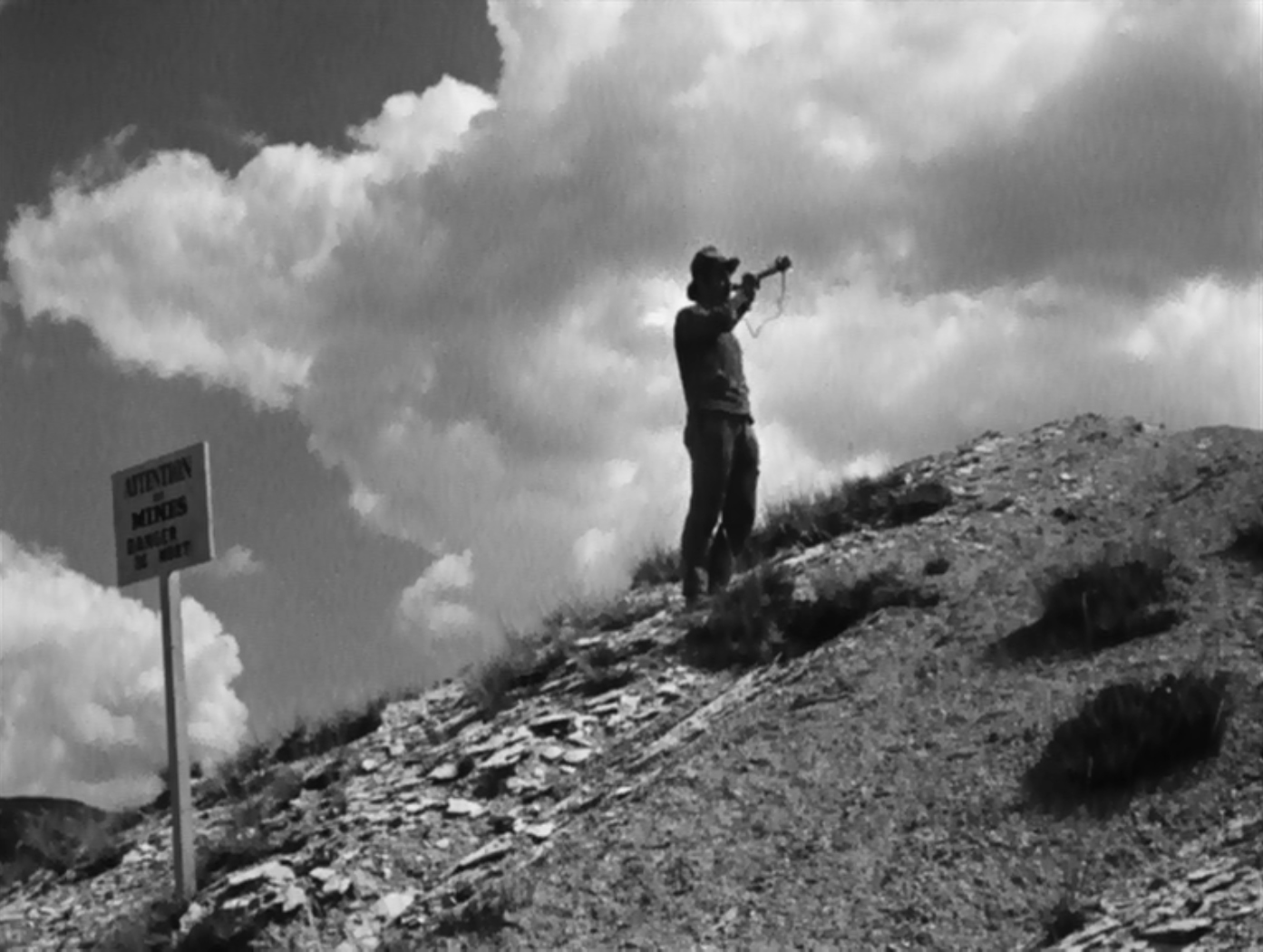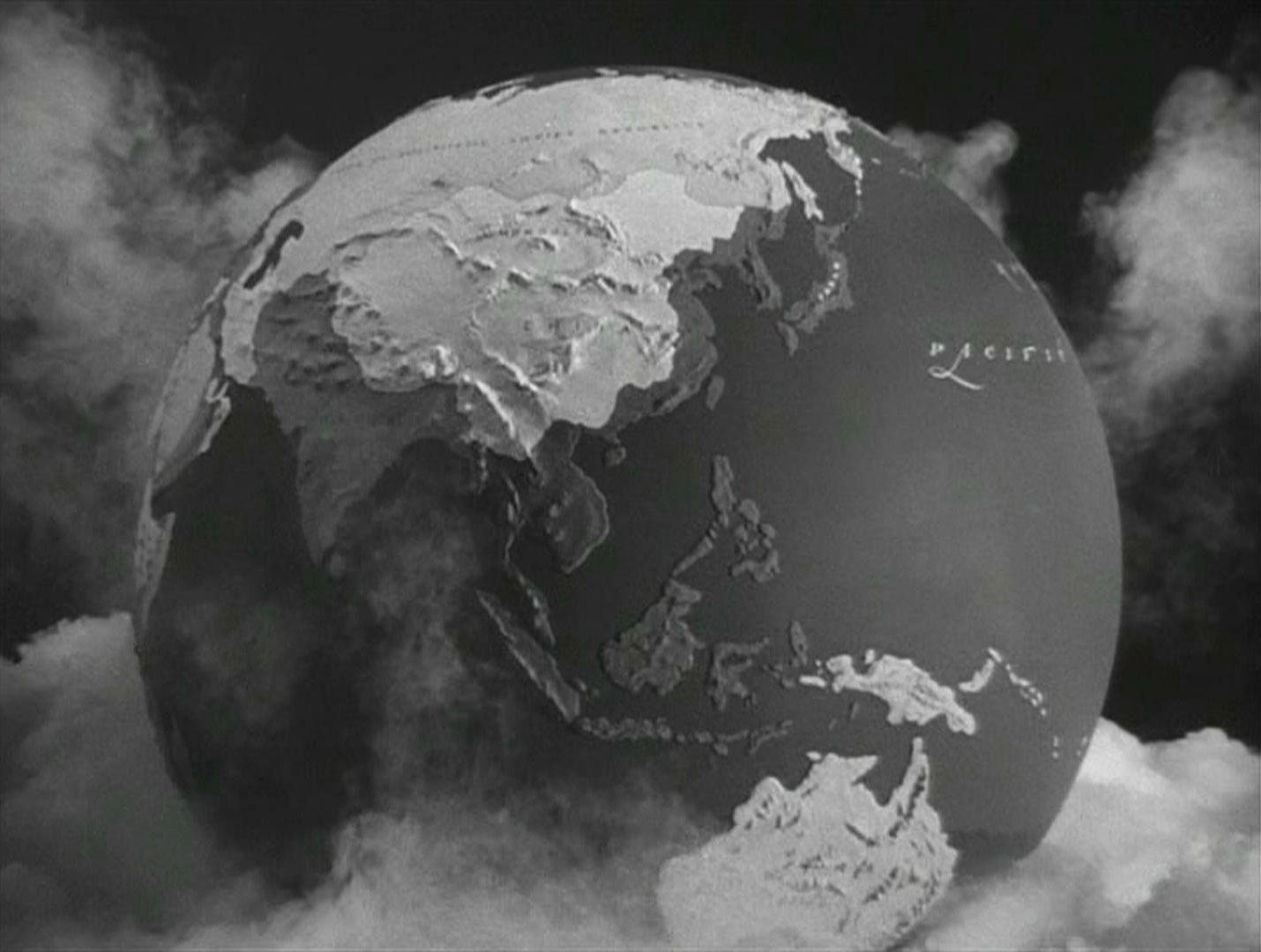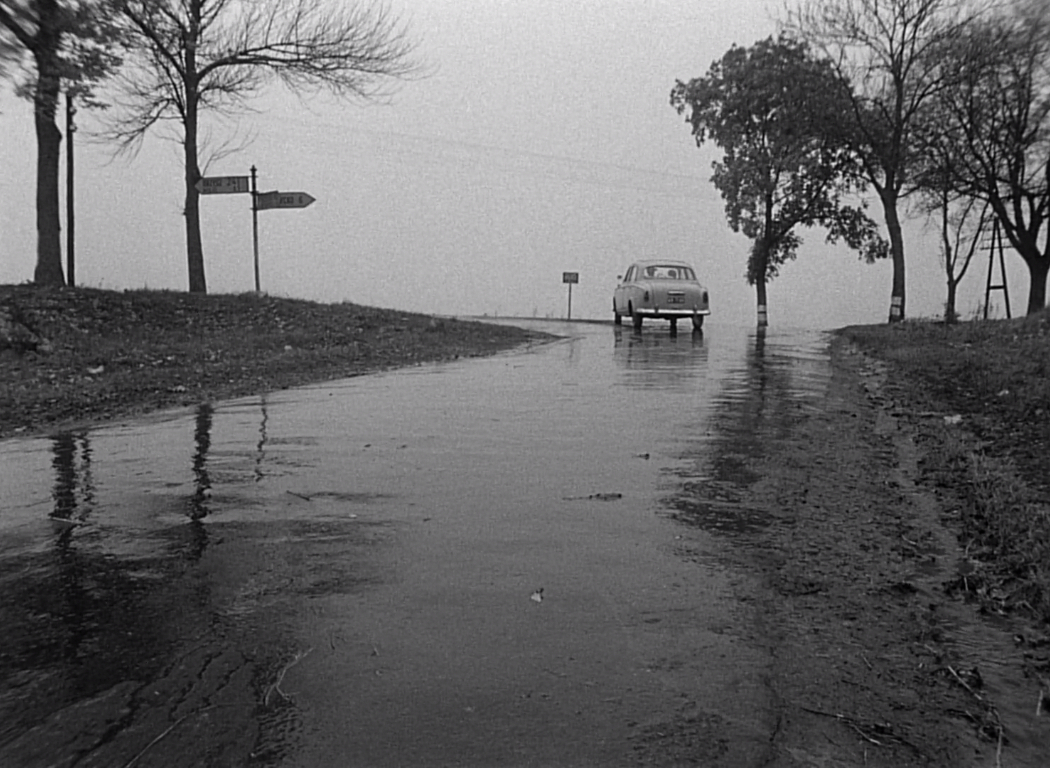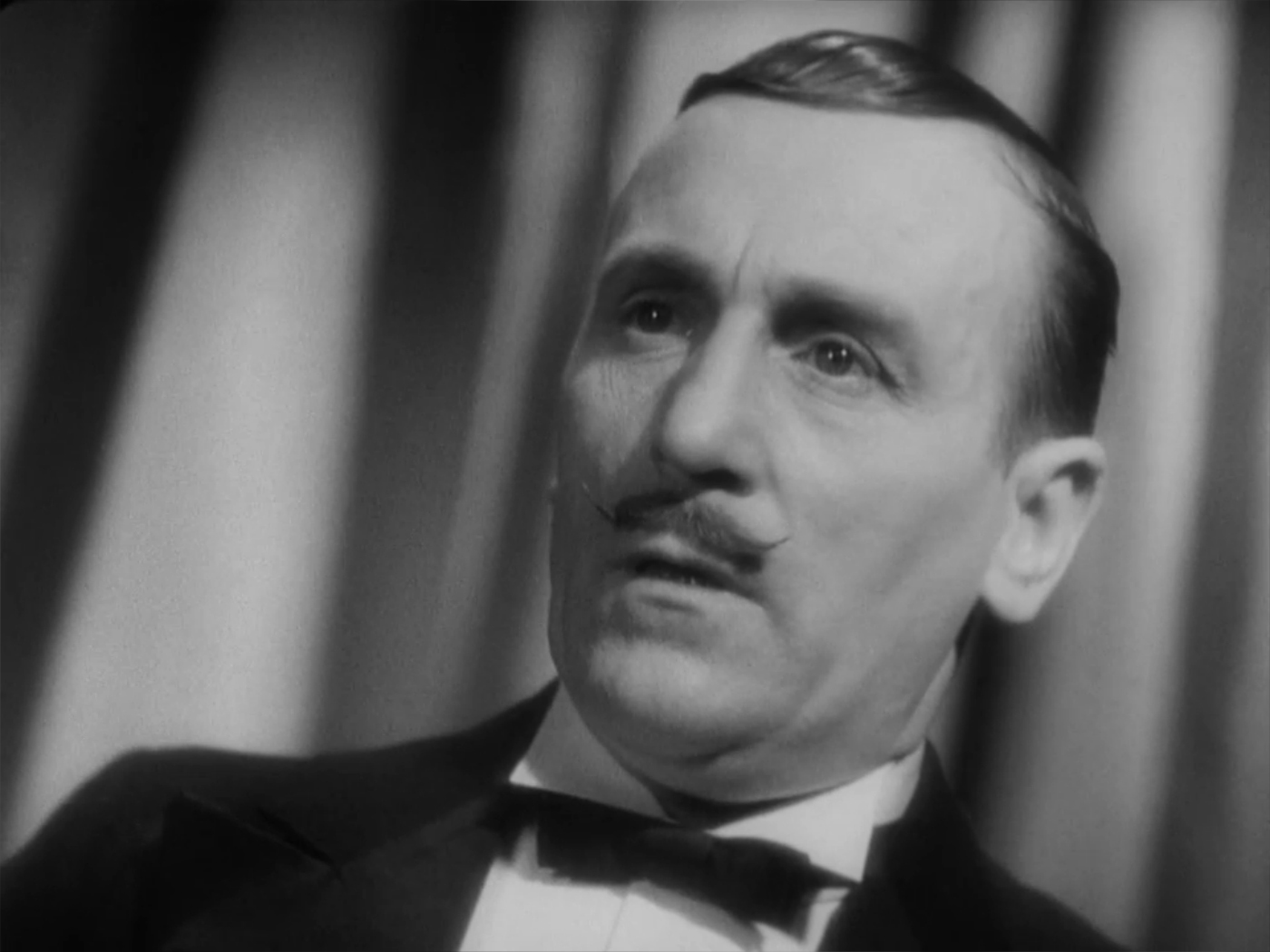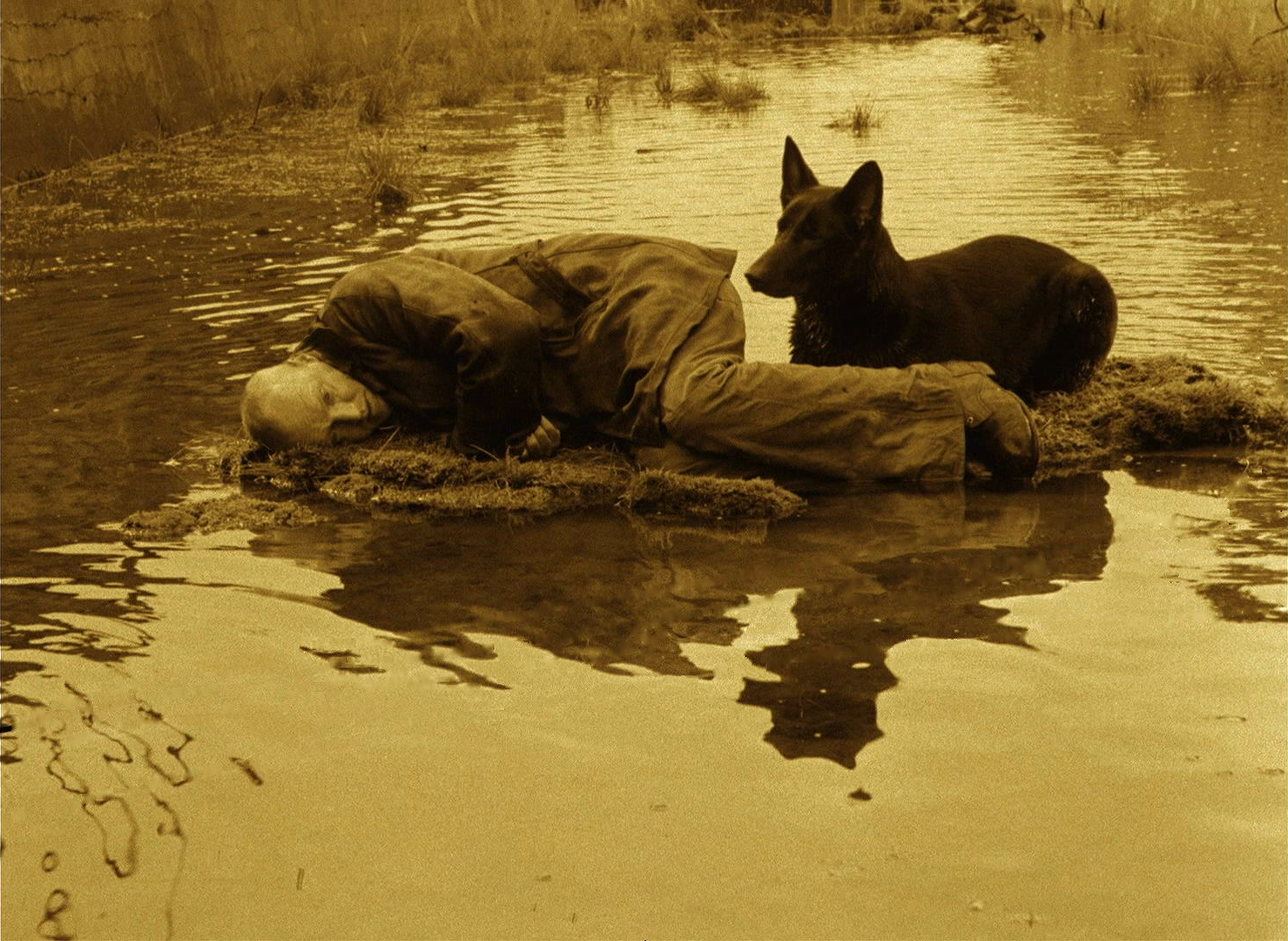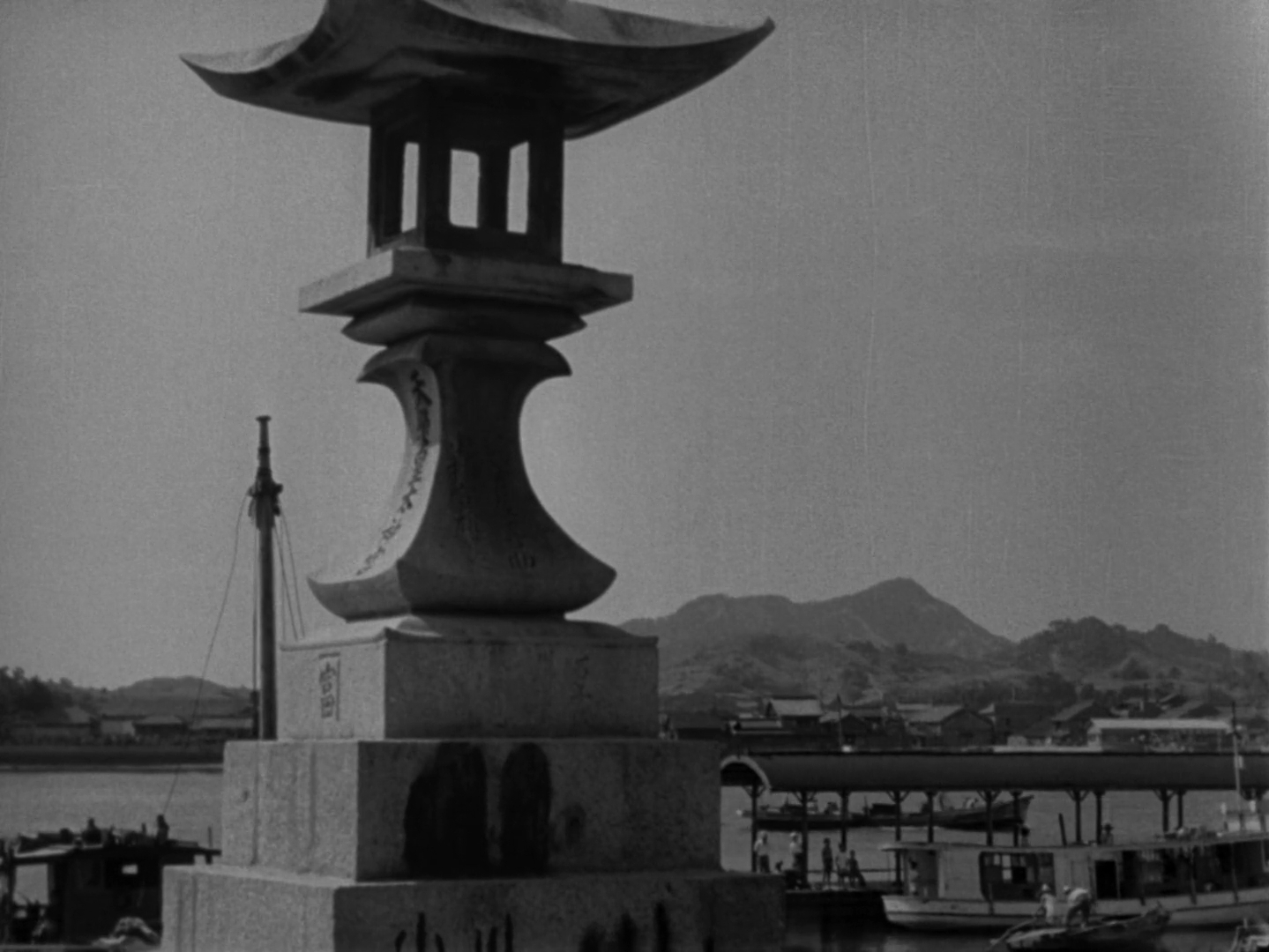8 KEYS TO UNDERSTANDING A MOVIE
We mustn’t think that understanding a film is a purely intellectual exercise. It’s a process of unlocking hidden feelings as well as ideas. But why would a film hide what it wants to express? Don’t filmmakers hope to be understood? Yes, certainly, and even a difficult filmmaker will usually leave redundant signs to help us penetrate a film. Our task is to watch and listen attentively. Still, there’s an unavoidable challenge in any worthwhile movie. If its purpose is too obvious, it’s like it’s preaching, trying to force people to understand. Instead, a good movie must express feelings and ideas in a way that lets viewers discover them on their own. The keys below may help you to make those discoveries.
1. Look for patterns, symmetries, structures, & repetitions
Most people who watch Eyes Wide Shut will notice that there are Christmas lights in almost every scene. Likewise, perceptive viewers of Ozu’s film I Was Born, But… might realize that every time the kids get into trouble it’s caused by circles. The sounds and images in Godard’s Alphaville are a relentless catalogue of opposites (cold & hot, north & south, occupied & free, yes & no, etc.). Filmmakers like to create patterns to minimize randomness, but more importantly, a pattern should point to what the film is saying.
Sometimes a pattern gives the whole movie a kind of symmetry. In L’avventura, seemingly random bits in the second half echo things in the first half: a dropped object, parallel ropes, lines of dialogue, papers scattered to the winds, a towering landmark on the horizon. These give the film a roughly palindromic structure, alerting us to see it as a kind of round trip, but also raising the question as to whether the most memorable event may also be repeated in some way.
Recurring elements are not just a kind of Easter egg. A good director will use them to emphasize a point, draw contrasts, and/or create ambiguity. The point is that movies tend to speak through their structure. In Shadow of a Doubt, every time the ring changes hands it changes the whole tone of the key relationship. Moreover, a ring is a symbol of marriage, which helps viewers go to the heart of the movie. Every single film on this site shows some form of structuring… see the Structure Index for a comprehensive list.
2. Consider the historical context
During the Nazi occupation, the French film industry made a string of surreal films like La nuit fantastique and The Hand of the Devil that today’s viewers often take for escapist fantasies. It’s a lazy assumption to make, and it diminishes the films. Many writers and filmmakers had ties to the Resistance, so it’s logical to suppose they were trying to communicate subversive feelings to their fellow countrymen over the heads of German censors. Once we accept this hypothesis, it’s not hard to find hidden meanings that cast the films in a new light.
As nice as it may be to think of movies as timeless monuments with universal relevance, the reality is that a movie is not made in a vacuum. Each film is made in a particular place and time, with some idea of speaking to a particular audience. Understanding that audience should help us to understand the movie. What were people living through in that country at that moment in history?
Films of the Great Depression, World War II, or other periods of turmoil and unrest tend to respond to their times. We don’t need to look far back to find examples… for instance, if we judge The Martian not only as entertainment but as a response to the most pressing topic of our century, it becomes a totally different movie.
3. Interrogate everything
One of the first shots in Lumière d’été (another French film of the Nazi occupation) shows a man blowing a horn against a cloudy sky warning people to stay away from explosions at a dam site. Of all the elements in a movie, you’d think it would be safe to assume that a cloud formation is random, but in this case the biggest cloud looks like the outline of France. The patriotic image might have been subliminal at best, but if we want to dig into a movie’s intentions it pays to notice facts like this.
If it’s worth questioning even the shape of a cloud in the background, then every detail should be fair game for questioning – character names, paintings on the walls, the film’s title, any jokes or anecdotes the characters tell. Of course filmmakers cannot control every detail, nor should they want to, but it would be a mistake to pre-judge which elements are incidental and which are integral.
In a famous scene from Michelangelo Antonioni’s Blow-Up the main character enlarges some photos he took in a park and studies them with intense curiosity, searching for something unknown that he might have missed. Eventually he finds something startling between the trees, which leads to another discovery and then another. If only we looked at movies with the same intensity, we would probably uncover all kinds of unexpected mysteries that shift our points of view.
4. Study the opening shots
The French comedy The Dinner Game opens with a boomerang flying through the air. It introduces an eccentric character who’s obsessed with boomerangs, setting the stage for more eccentricities to come… but a boomerang also summarizes the whole movie. What we do to others comes back to us, just like a boomerang. It’s an exceedingly simple but instructive example of how a film’s opening encapsulates what it’s all about.
Casablanca opens with a globe spinning, and the movie is correspondingly about global affairs at a time of crisis, but the rotating Earth is also an image of days moving forward. As it happens, Casablanca is also about time. Its signature song “As Time Goes By” is one of many allusions to passing time, and the famous line “We’ll always have Paris” expresses an important insight about how we can look at time differently.
The relevant clue may be anywhere in the opening… possibly in the titles or right after. We might not see it until we look back, but if we want to understand a film then our job is to memorize its opening and ask ourselves what it says about the whole story.
5. Reverse engineer the ending
Knife in the Water leaves the viewer hanging at the end. After a boating excursion the couple drives to a crossroads and simply stops there until the film runs out. The husband must decide whether to go home or to the police. For a casual viewer the only question is where he’ll go next, but surely the movie has better things to do than to throw a riddle at us. We can appreciate the complexity of his dilemma, but if we reconstruct how the couple came to that situation then the whole movie shifts emphasis, making it a story about the weakness of masculinity.
A well made ending should tell us about the movie’s purpose, because everything else has been reaching for that particular moment. If we can figure out why the movie finishes that way and how it got there, we should be able to answer the most important questions about the film.
As with most of Antonioni’s endings, nothing about the final scene of La notte follows deterministically from the plot. Everything raises questions that tie back to earlier scenes. The horizontal pan connects to the descent down the skyscraper. Lidia reveals her secret thought from the nightclub, making the couple’s whole relationship freshly ambiguous. Giovanni’s old letter to his sleeping wife adds a new layer to the film’s view of time. The sand trap completes and confirms a series of allusions to La dolce vita, which ends at a beach. The two trees do at least three things: they echo an earlier shot at the party; they recall Valentina’s philosophical tape recording; and they guide us to look at the couple with the same paradoxical mix of matter-of-factness and wonder that typically defines our view of nature. In short, the ending helps us to look back at the whole film differently. It can be difficult to see all of this unless we’ve reserved judgment for the past two hours.
6. Get inside the skin of the characters
Hitchcock’s film The 39 Steps climaxes on a character named Mr. Memory, a savant who has memorized so many facts that he can unfailingly answer random questions before a theater audience. Mr. Memory has been recruited by a foreign agent to smuggle military secrets out of England, but at the key moment he betrays his employers, spilling their secrets. The plot requires him to switch sides in a flash, and if we watch casually it might seem too convenient. Would he really do that? Mr. Memory only makes two brief appearances, so we don’t know a lot about him. Hitchcock’s genius is that we’re given enough to say that, yes, someone in his position would speak the truth. His whole sense of pride depends on it, and in spite of everything he’s done, we can believe that he would rediscover a loyalty to his native country.
In A Letter to Three Wives there’s a character named Addie Ross whose screen time is even less than Mr. Memory’s. We only see the side of her body for two brief moments, yet she drives the plot, and the movie’s point depends on our figuring out her motive. The problem is that her motive doesn’t seem to be a mystery. She’s run off with one of the wives’ husbands, and the movie gives us plenty of obvious possible reasons – none of which is correct. Most viewers probably overlook her real motive and miss the movie’s point, but that’s not the movie’s fault. If we train ourselves to enter the mind of a character, even someone as unlike ourselves as Mr. Memory or Addie Ross, we’ll find so much more to appreciate.
Getting inside a character is not the same as identifying with that character. In fact it’s more the opposite. Passive identification is a bad habit that interferes with active empathy and observation. Viewers who identify too much with the protagonist of Brief Encounter will likely fail to see her faults and will miss what’s going on with the two male leads. Looking at the story through each character’s point of view simultaneously, it becomes altogether unlike the romance that so many people take it for.
7. Be alert to external parallels
Andrei Tarkovsky’s film Stalker is about a journey through a fantastical land called “the Zone” to a place where wishes are granted. The Zone is shot in color, and the protagonist’s dreary home is in sepia. With the “Z” and the “O” in “Zone” this starts to sound like The Wizard of Oz. Like Dorothy’s three companions, one traveler is a fool, one lacks a heart, and one is a coward. They all sleep on the ground in the middle of their trek (recalling the poppy field), and the cowardly character puts on a crown (as the Lion does) outside the wish-giving room.
Most viewers would never suspect that a slow philosophical film like Stalker would be a remake of a popular MGM musical. Could the similarity be a coincidence? Maybe. It’s easy to find parallels when you want to, and confirmation bias tends to take over… but the similarity is not the end point of an interpretation. What’s important, rather, is the insight it leads to, and in this case we can start to see how Stalker reaches for an idea akin to Dorothy’s last line, “There’s no place like home.” The idea of home, it turns out, is central to all of Tarkovsky’s last five films.
Of course a good film should stand on its own, and you shouldn’t have to seek its meaning in other films, books, or plays. You could reach the same conclusions about Stalker if you had never seen The Wizard of Oz. Finding the parallel gives you a nice shortcut, and it can bolster your argument, but it’s not necessary.
8. Find the unifying idea
There’s a certain kind of dream-like narrative that’s become popular in recent years. Films like Mulholland Drive, Enemy, and Burning leave viewers scratching their heads and searching online for explanations. Some good essays are out there, but most of them are satisfied to answer “what happened?” Interpretation has to go further than clarifying the plot… it needs to find the movie’s purpose. It’s fine to sort out what’s real and what’s metaphor, but we need to know precisely what Mulholland Drive says about Hollywood, what Enemy says about manhood, or what Burning says about fantasy and creativity. Often, multiple equally valid understandings of the plot and characters will arrive at the same comprehensive vision.
Following the seven keys above can yield tantalizing insights, but, again, we mustn’t be too easily satisfied. Let’s test them, for instance, on Tokyo Story:
Key #1: The scene at Ueno Park splits the film into two parts, and it’s bracketed by two opposite camera movements that mirror the journey east to Tokyo and back. Ueno Park was a traditional gathering place for Tokyo’s homeless during war and earthquakes, and it’s the turning point as the elderly couple goes from home to homelessness and back again by degrees.
Key #3: If we interrogate the dialogue as a whole, asking ourselves what’s distinctive about it, we may discover that its tenor changes midway through. In the first half, characters utter facts and banal pleasantries. After Ueno Park they speak of emotions. This shift cannot be unimportant or unintentional.
Key #4: Tokyo Story opens with a few seemingly simple shots of Onomichi, introducing the elderly couple’s home. Once we catch on to Ozu’s language, however, those shots identify three modes of time – eternal, cyclical, and linear – that will recur in the scenes ahead.
Key #6: Observing each character closely reveals some fascinating correlations. The father usually speaks of the past and the mother of the future. The two older children are a doctor and a beautician, one tending to the inside of the body, the other to the outside. The next three children correspond exactly to the three modes of time identified in the opening shots.
It’s exciting to make observations like these, but ultimately they’re trivial if we miss the main point of Tokyo Story, which is to stand back and look at the inevitable losses and disappointments of life with a sense of wonder. If we look at death and disappointment as inevitable parts of the adventure of passing through time, it becomes easier to face life.
The Cabinet of Dr. Caligari is another film that’s open to many lines of interpretation, most of them recognizing an insane and unreliable narrator. There’s evidence he’s guilty of murder, implying that the film is about what goes on in the mind of a criminal… but why stop there? The same insight applies to the smaller guilt and self-deceptions of ordinary people, who typically convince themselves of their own virtue. We should prefer a wider, more universally relevant interpretation to a narrow one.
Movies present an overwhelming amount of layered information – sounds, images, words, gestures, editing, and cultural context. All of this can suggest a mess of competing interpretations, but there are practical tests for any interpretation. Does it make the film stronger? Is it broadly relevant to the film’s audience? Does it unite all the film’s elements around a single idea? To understand a movie is to see it whole, and we should be suspicious of any interpretation that feels incomplete.
